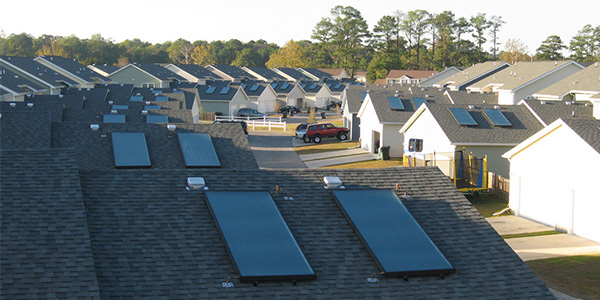By Holden Mann
NERC has opened a formal comment period on a draft reliability guideline covering the collection of data on distributed energy resources to run through April 24.
The draft guideline was developed by the System Planning Impacts from Distributed Energy Resources (SPIDER) working group and approved for comment by NERC’s Planning Committee last week. (See “Actions,” NERC OC, PC and CIPC Briefs: March 3-4, 2020.)
“As the penetration of DERs continues to grow, representing DERs in planning assessments becomes increasingly important,” the guideline says.
Under the planned guideline, TPs and PCs would be responsible for setting clear and consistent requirements for collecting aggregate DER data and sharing the information gathered with distribution providers and “any other external parties … performing DER forecasting to the TP and PC for modeling purposes.”
TPs and PCs may establish different requirements for utility- and retail-scale DERs based on their size, impact and location on the distribution system. For example, utility-scale DERs may be required to provide more detailed information on the facility, while aggregate retail-scale DER data can be collected without reference to individual facilities.
The SPIDER team has become increasingly concerned about a lack of understanding among TPs and PCs about the ways that DERs interact with the grid. This blind spot was highlighted in a white paper discussed at last week’s Planning Committee meeting, as well as in a presentation at a meeting of the SPIDER group earlier this year by Thomas Bialek of San Diego Gas & Electric. (See Rooftop PV’s ‘Hidden Loads’ Challenge Grid Planners.)
In that presentation, Bialek described a number of counterintuitive observations about behavior of DER users in his utility’s service territory — including users of both rooftop solar panels and batteries. Among SDG&E’s findings was the fact that customers seem to use even more energy after installing DERs than they normally would.
“Effectively they say, ‘I’ve put a PV system on my roof, or a battery — I’m now in charge, and I’m going to do whatever it is I want to do,” Bialek said. He dubbed this pattern of increased usage a “hidden load” that can’t be accounted for in system planning, either to tune the output of DERs or to predict how users will behave in the event of widespread service disruption.
One challenge that Bialek identified for the collection of DER data is the existence of privacy laws in some states that prevent utilities from monitoring these devices. The proposed guideline does not directly address this issue, but it does hold up the Australian Electricity Market Operator’s DER Register as a model of effective DER data collection that “[balances] information and transparency” and is “accessible and easy to use, while confidentiality and privacy are protected.”



